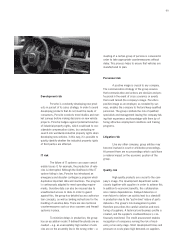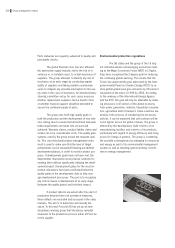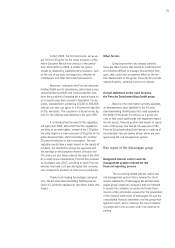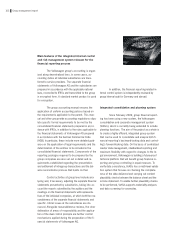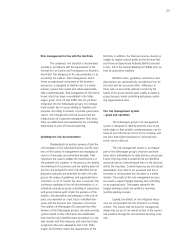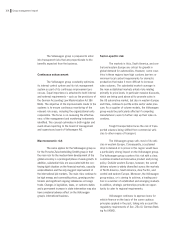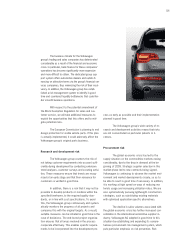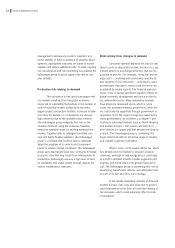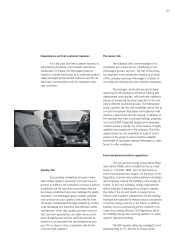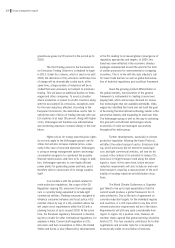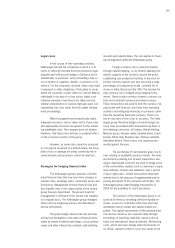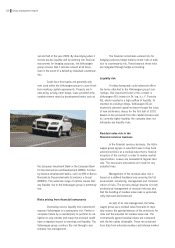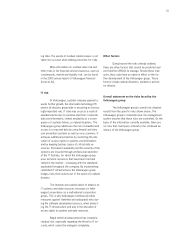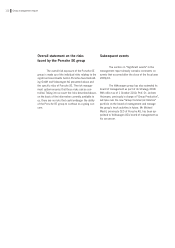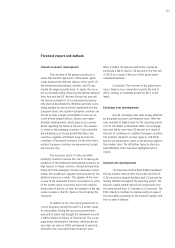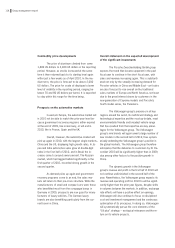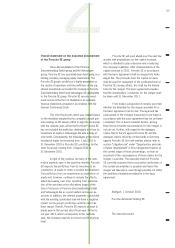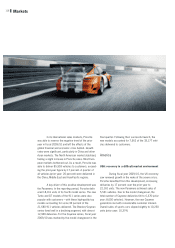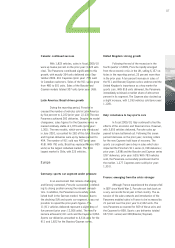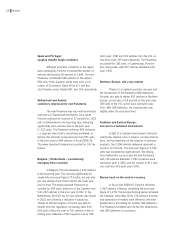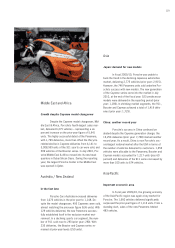Porsche 2009 Annual Report Download - page 109
Download and view the complete annual report
Please find page 109 of the 2009 Porsche annual report below. You can navigate through the pages in the report by either clicking on the pages listed below, or by using the keyword search tool below to find specific information within the annual report.Legal cases
In the course of their operating activities,
Volkswagen AG and the companies in which it is di-
rectly or indirectly invested become involved in legal
disputes and official proceedings in Germany and in-
ternationally. In particular, such proceedings may oc-
cur in relation to suppliers, dealers, customers or in-
vestors. For the companies involved, these may result
in payment or other obligations. Particularly in cases
where US customers assert claims for vehicle defects
individually or by way of a class action, highly cost-
intensive measures may have to be taken and sub-
stantial compensation or punitive damages paid. Cor-
responding risks also result from US patent infringe-
ment proceedings.
Where transparent and economically viable,
adequate insurance cover is taken out for these risks
and appropriate provisions recognized for the remain-
ing identifiable risks. The company does not believe,
therefore, that these risks will have a sustained effect
on the economic position of the group.
However, as some risks cannot be assessed
or can only be assessed to a limited extent, the possi-
bility of loss or damage not being covered by the in-
sured amounts and provisions cannot be ruled out.
Strategies for hedging financial risks
The Volkswagen group’s business activities
entail financial risks that may arise from changes in
interest rates, exchange rates, commodity prices and
fund prices. Management of these financial risks and
also liquidity risks is the responsibility of the central
group treasury department. The group’s board of
management is informed of the current risk situation
on a regular basis. The Volkswagen group manages
these risks by employing primary and derivative fi-
nancial instruments.
The group hedges interest rate risk and risks
arising from fluctuations in the value of financial instru-
ments by means of interest rate swaps, cross-currency
swaps and other interest rate contracts with matching
amounts and maturity dates. This also applies to financ-
ing arrangements within the Volkswagen group.
Foreign currency risk is reduced primarily
through natural hedging, i.e. by flexibly adapting pro-
duction capacity at the locations around the world,
establishing new production facilities in the most im-
portant currency regions and also procuring a large
percentage of components locally, currently for in-
stance in India, Russia and the USA. The residual for-
eign currency risk is hedged using hedging instru-
ments. These include currency forwards, currency op-
tions and combined currency and interest swaps.
These transactions are used to limit the currency risk
associated with forecast cash flows from operating
activities and intragroup financing in currencies other
than the respective functional currency. These con-
tracts may have a term of up to six years. The Volks-
wagen group therefore hedges principal foreign cur-
rency risks associated with forecasted cash flows in
the following currencies: US dollars, British sterling,
Mexican pesos, Russian rubles, Swedish krona, Czech
koruna, Polish zloty, Brazilian real, Chinese renminbi,
Australian dollars, Swiss francs and Japanese yen –
mostly against the euro.
The purchasing of raw materials gives rise to
risks relating to availability and price trends. The risks
are limited by entering into forward transactions and
swaps. Appropriate contracts are used to hedge some
of the commodities needed, such as aluminum, copper,
lead, platinum, rhodium and palladium, over a period
of up to eight years. Similar transactions have been
entered into for the purpose of supplementing and im-
proving allocations of CO2 emission certificates. The
Volkswagen group added hedging transactions in
2009 for the quantities of coal it purchases.
The solvency of the Volkswagen group is en-
sured at all times by providing sufficient liquidity re-
serves, access to confirmed credit lines and tried-
and-tested money market and capital market pro-
grams. The capital requirements of the growing finan-
cial services business are covered mainly through
borrowings at matching maturities raised in the na-
tional and international financial markets. Refinancing
costs, which had risen sharply when the financial cri-
sis broke, started to return to pre-crisis levels in the
109


